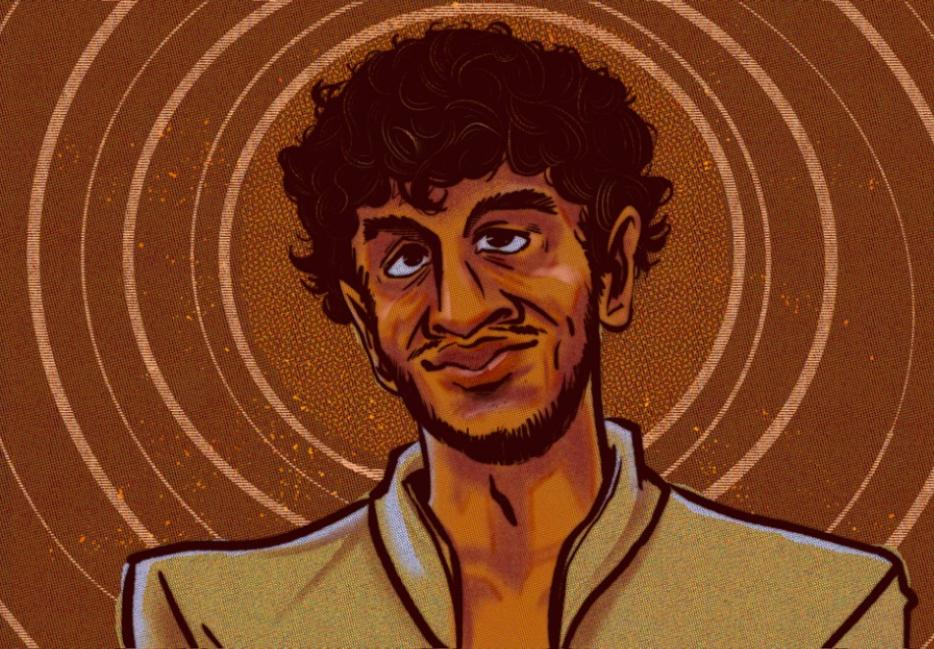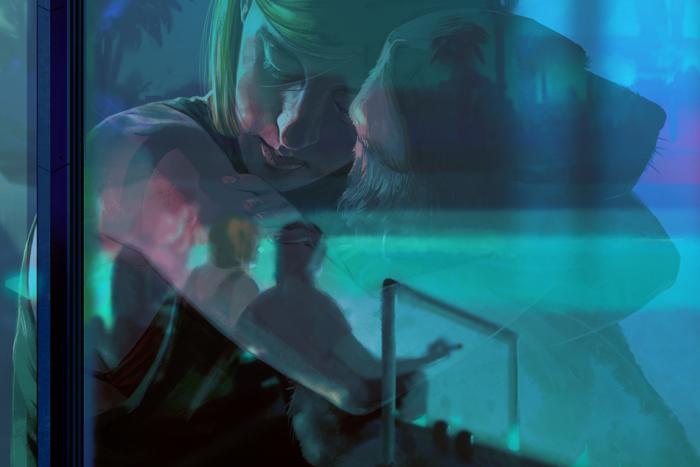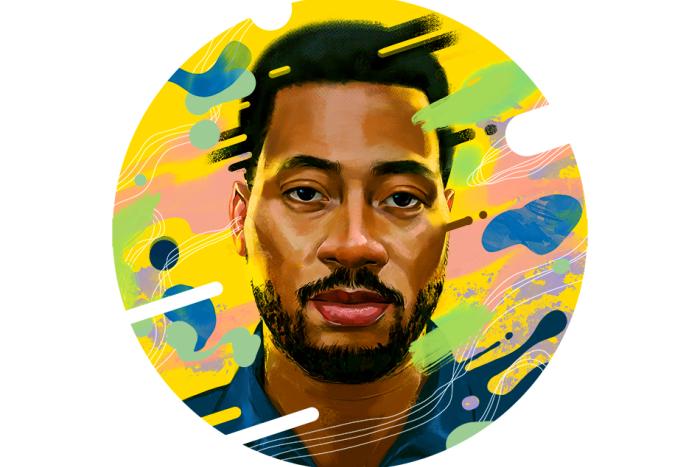Welcome to Wayward Watching, a column on the seen and unseen in film.
A song led me to the movie. I was exchanging notes with a friend recently on the Indian classical singer Kishori Amonkar when I recalled the first time I heard her voice. Years ago, I was on a train to New Delhi, when “Sanwariya Sanjh,” Amonkar’s duet with her pupil Raghunandan Panshikar, rang out from the speakers of a station en route. This must have been sometime after the turn of the millennium, when I was nine or ten. I was travelling with my father, whose face looked more resentful than usual because of an argument with my mother moments before boarding the train. The two singers sounded harmonious in a way my parents’ voices rarely did: Amonkar’s cries, seemingly in the background, and yet effortlessly propulsive; Panshikar’s deceptive lament, priming the listener for Amonkar’s voice, while purporting to do the heavy lifting. Like most children at that age, I perceived classical music as noise, but I remember imagining that the song was probably recorded by a couple in a happy marriage.
A decade later, I discovered that Amonkar had composed the song as part of the soundtrack for Drishti, Govind Nihalani’s 1990 portrait of, well, an unhappy marriage. Fresh from the throes of a breakup, I had wandered into a retrospective of Nihalani’s films inside a refurbished Bombay theatre, having run out of things to do alone on a Sunday. And there was that song again, reminding me of my parents’ long-standing quarrels, just when I was trying to forget that the woman I dated for over a year hadn’t replied to my texts in a month. The film didn’t clarify much about the mystery of adult relationships. Nikhil and Sandhya, the philandering protagonists, spend their mornings sharing their coded dreams with one another, and their evenings debating sex and commitment with friends. The scenes mostly unfold as conversations, except for a wonderfully wordless interlude when Sandhya (played by Dimple Kapadia) embarks on an affair with Rahul, a youngish classical singer (played by Irrfan Khan). Stepping out of her office in the rain, Sandhya is surprised to see Rahul drenched from head to toe, waiting for her on the other side of the road. She smiles and hops across the pavement with her umbrella, as if to save him.
Music and rain: one can’t help but admire the facility with which Indian filmmakers depict the onset of monsoons, the late-summer miracle of water returning to earth. In Satyajit Ray’s Pather Panchali, you expect to see water overflowing from the pond where the protagonist Apu and his older sister, Durga, take their daily baths, but no, Ray captures the season’s first drops falling on the bald pate of a man idling by the edge of the lake. We’re in rural Bengal, miles away from the Art Deco buildings of south Bombay in Drishti, and yet classical music is again the threnody to a clutch of wordless moments, the inclement weather within. Any other director would have fretted that the mellow sound of Ravi Shankar’s sitar doesn’t quite work with the prophetic shot of Apu and Durga darting past a field without an umbrella, or the tragic instant when their mother, unable to make ends meet, steals fruit from a neighbour’s yard in the rain. These moments unfold on screen, however, with a naive insouciance, as though Apu had been dreaming them up in the first place.
Bollywood movies, too, can be oddly persuasive with their rain sequences, so long as you aren’t just watching a flamboyantly dressed couple gyrating between trees. Recently I watched Manzil with a friend and we were both very impressed that for once Amitabh Bachchan wasn’t flopping to his knees in the middle of the road when the obligatory rain song came on. Instead of a posse of supporting dancers mimicking the protagonists’ every move, we see a shy couple, dressed respectively in a suit and a sari, hold hands and walk along the promenades of Bombay on a damp afternoon. There are no blunt displays of affection: the woman chastely rests her head on the man’s wet shoulders during the song’s final refrain. “This is how I imagine my parents dating,” my friend told me. “Never kissing—just walking around south Bombay in the rain.” I wondered about his own celluloid fantasies of romance. They were probably not too different from mine, and again had something to do with south Bombay and the rains. Did he picture something along the lines of a sequence in Dahek where a Hindu boy and a Muslim girl agree to meet up at a colonial-era church and daydream about being shadowed by each other as the girl splashes around a puddle with a group of schoolkids, and the boy drops by a corner store to buy some flowers? Or perchance something similar to the climax of Wake Up Sid where a baby-faced Ranbir Kapoor ends up getting drenched at Marine Drive and also confesses his feelings for an older friend?
Despite sitting through The Notebook and Breakfast at Tiffany’s multiple times, their famous rain scenes always strike me as inappropriate. After all, you want to see white people kissing with the snow faintly falling outside a window in the background, not while chasing each other in the rain. Audrey Hepburn might be trying her utmost to summon some intensity, but I still have trouble believing that the director ever shared an umbrella with a stranger, or rescued a lover’s cat from a flooded alley. There is a formal obliqueness to rainy days that is at odds with the chatty ethos of Hollywood love stories. You end up being stuck somewhere; you don’t get much done. You’d rather not talk to anyone. But then you catch yourself humming a song.






